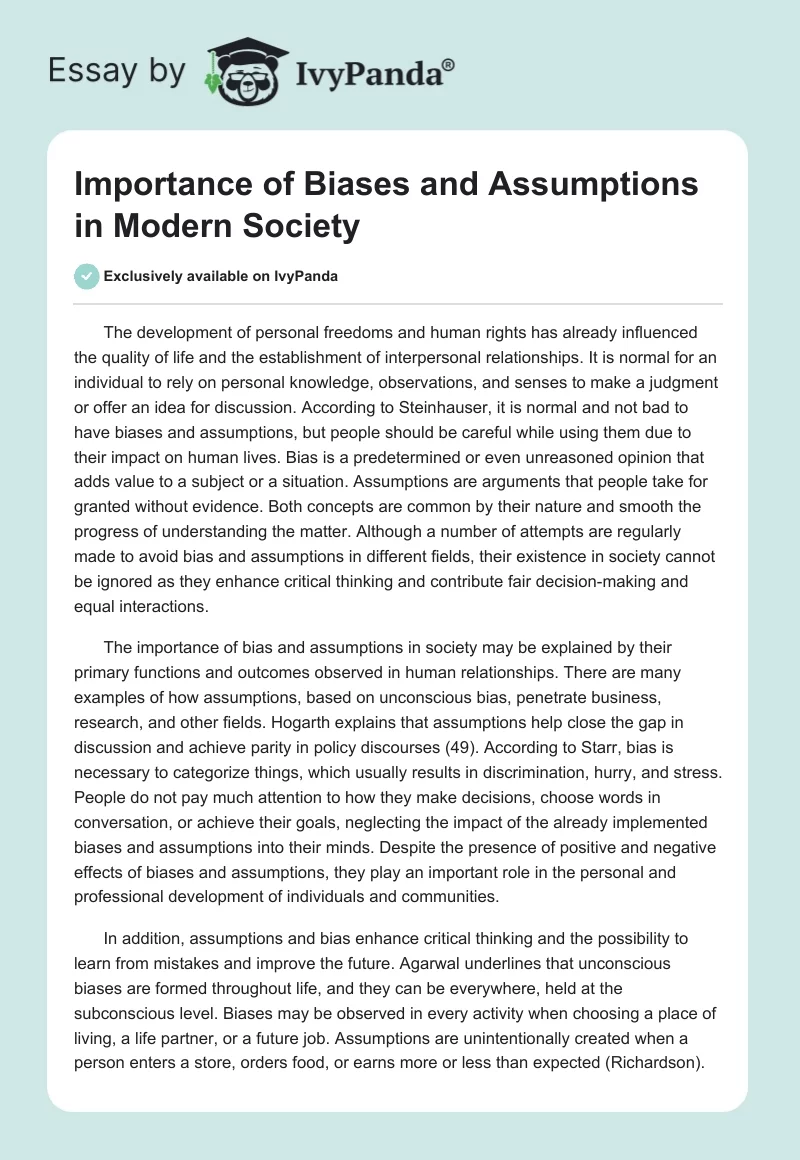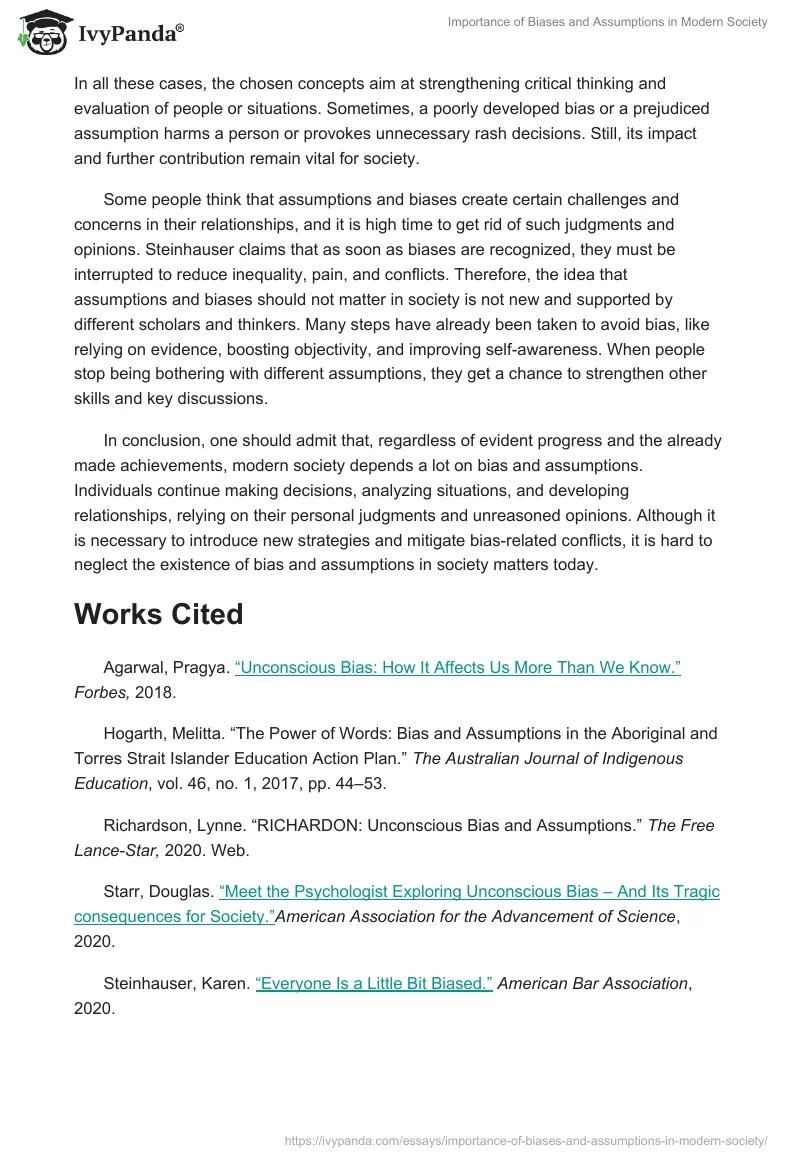The development of personal freedoms and human rights has already influenced the quality of life and the establishment of interpersonal relationships. It is normal for an individual to rely on personal knowledge, observations, and senses to make a judgment or offer an idea for discussion. According to Steinhauser, it is normal and not bad to have biases and assumptions, but people should be careful while using them due to their impact on human lives. Bias is a predetermined or even unreasoned opinion that adds value to a subject or a situation. Assumptions are arguments that people take for granted without evidence. Both concepts are common by their nature and smooth the progress of understanding the matter. Although a number of attempts are regularly made to avoid bias and assumptions in different fields, their existence in society cannot be ignored as they enhance critical thinking and contribute fair decision-making and equal interactions.
The importance of bias and assumptions in society may be explained by their primary functions and outcomes observed in human relationships. There are many examples of how assumptions, based on unconscious bias, penetrate business, research, and other fields. Hogarth explains that assumptions help close the gap in discussion and achieve parity in policy discourses (49). According to Starr, bias is necessary to categorize things, which usually results in discrimination, hurry, and stress. People do not pay much attention to how they make decisions, choose words in conversation, or achieve their goals, neglecting the impact of the already implemented biases and assumptions into their minds. Despite the presence of positive and negative effects of biases and assumptions, they play an important role in the personal and professional development of individuals and communities.
In addition, assumptions and bias enhance critical thinking and the possibility to learn from mistakes and improve the future. Agarwal underlines that unconscious biases are formed throughout life, and they can be everywhere, held at the subconscious level. Biases may be observed in every activity when choosing a place of living, a life partner, or a future job. Assumptions are unintentionally created when a person enters a store, orders food, or earns more or less than expected (Richardson). In all these cases, the chosen concepts aim at strengthening critical thinking and evaluation of people or situations. Sometimes, a poorly developed bias or a prejudiced assumption harms a person or provokes unnecessary rash decisions. Still, its impact and further contribution remain vital for society.
Some people think that assumptions and biases create certain challenges and concerns in their relationships, and it is high time to get rid of such judgments and opinions. Steinhauser claims that as soon as biases are recognized, they must be interrupted to reduce inequality, pain, and conflicts. Therefore, the idea that assumptions and biases should not matter in society is not new and supported by different scholars and thinkers. Many steps have already been taken to avoid bias, like relying on evidence, boosting objectivity, and improving self-awareness. When people stop being bothering with different assumptions, they get a chance to strengthen other skills and key discussions.
In conclusion, one should admit that, regardless of evident progress and the already made achievements, modern society depends a lot on bias and assumptions. Individuals continue making decisions, analyzing situations, and developing relationships, relying on their personal judgments and unreasoned opinions. Although it is necessary to introduce new strategies and mitigate bias-related conflicts, it is hard to neglect the existence of bias and assumptions in society matters today.
Works Cited
Agarwal, Pragya. “Unconscious Bias: How It Affects Us More Than We Know.”Forbes, 2018.
Hogarth, Melitta. “The Power of Words: Bias and Assumptions in the Aboriginal and Torres Strait Islander Education Action Plan.” The Australian Journal of Indigenous Education, vol. 46, no. 1, 2017, pp. 44–53.
Richardson, Lynne. “RICHARDON: Unconscious Bias and Assumptions.” The Free Lance-Star, 2020. Web.
Starr, Douglas. “Meet the Psychologist Exploring Unconscious Bias – And Its Tragic consequences for Society.”American Association for the Advancement of Science, 2020.
Steinhauser, Karen. “Everyone Is a Little Bit Biased.”American Bar Association, 2020.


